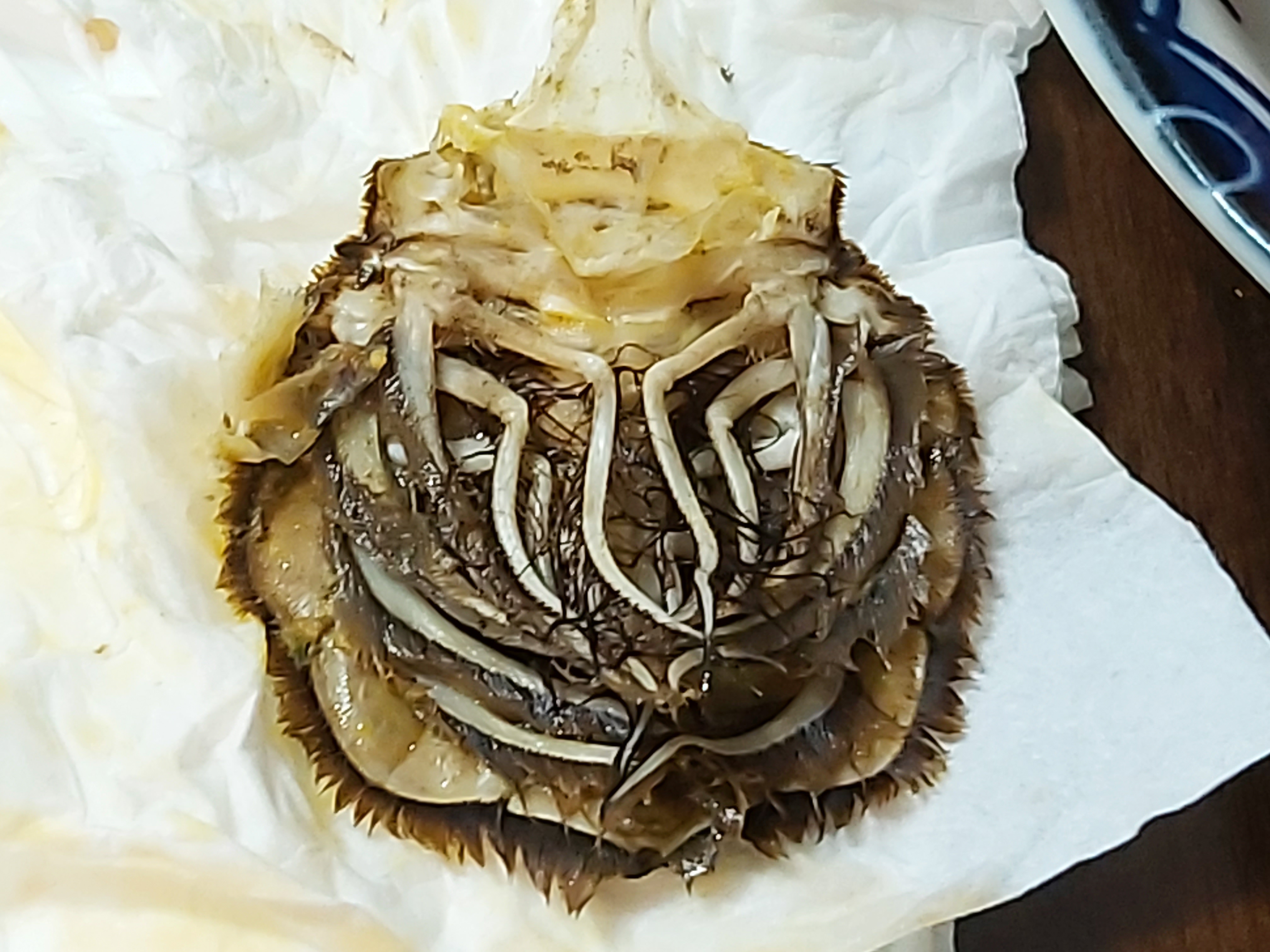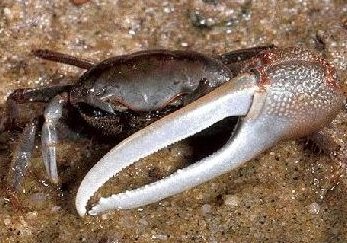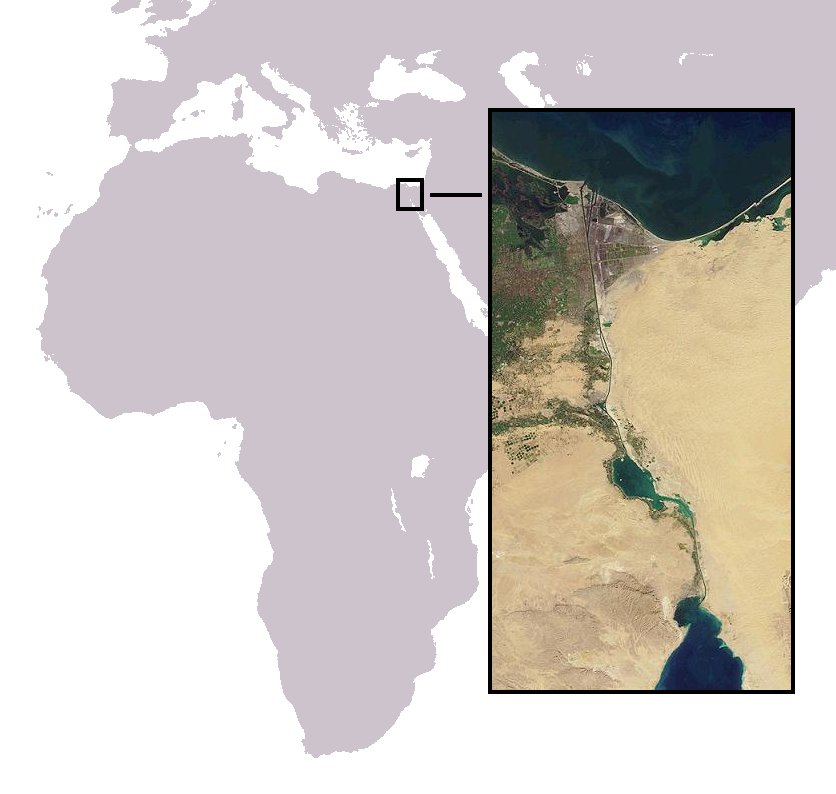|
Belzebub (crustacean)
''Belzebub'' is a genus of prawns in the family Luciferidae. The species which make up the genus ''Belzebub'' were formerly placed in the genus ''Lucifer'' but were separated to form ''Belzebub'' after a cladistic analysis. They are very small planktonic and benthic prawns with an extreme lateral compression of the carapace with elongated mandibles and anteriors of the pereiopods but lacking pereiopods 4 and 5 and any gills. The pereiopods either lack chelae or they are substantially reduced. The sixth abdominal segment of males has two ventral processes and the telson has a strong ventral process. Distinction from ''Lucifer'' ''Belzebub'' is distinguished from the related ''Lucifer'' by have medium length eyestalks and by both sexes having similar eyes, in the species in ''Lucifer'' there is sexual dimorphism in the size of the eyes. In addition, the ventral process of the two on the male's sixth segment is straight and tapering rather than curved and obtuse. Etymology The gene ... [...More Info...] [...Related Items...] OR: [Wikipedia] [Google] [Baidu] |
Belzebub Hanseni
''Belzebub hanseni'', the ghost shrimp or ghost prawn, is a small planktonic and benthic species of prawn from the family Luciferidae. Description ''Belzebub hanseni'' has an elongated appearance, looking as if it is a prawn that has been stretched, and it is transparent. The carapace is extremely laterally compressed and the head section is longer and narrower than the thorax which causes the eyes and antennae being widely separated from the mouthparts. The rostrum is short and has a sharp point. It has three pairs of pereiopods instead of the normal five, with the third pair bearing chelae. In males the telson has two distinct projections on the ventral surface. Distribution ''Belzebub hanseni'' is found in the Indian Ocean and South China Sea south to Australia as far south as Tasmania. It has colonised the Suez Canal and its associated lakes such as the Great Bitter Lake from the Red Sea and has been found in the south eastern Mediterranean Sea. It was originally foun ... [...More Info...] [...Related Items...] OR: [Wikipedia] [Google] [Baidu] |
Giuseppe Nobili
Giuseppe Nobili (1877-1908) was an Italian zoologist at the University of Turin, specialising in Crustacea, who was born at Omegna in Piedmont in 1877 and died at Omegna in 1908. His father was Dr. Gaudenzio Nobili and his mother, Adele Antonioli Nobili. Nobili attained his doctor's degree in natural science from the University of Turin in 1899 when he was also appointed as an assistant in the University's Museum of Zoology. Later, in 1903 he was appointed as an assistant in the University of Turin's Museum of Comparative Anatomy. While he was a student Nobile had published some notes on botany, botanical subjects but soon turned his full attention to zoology. In total he published 53 papers on crustaceans, the first being an account of the collections of Decapoda, decapods on the University Museum of Zoology collection which had been collected by Dr A, Borelli in Argentina and Paraguay. This series of papers were an important contribution to the science of carcinology and contain ... [...More Info...] [...Related Items...] OR: [Wikipedia] [Google] [Baidu] |
Luciferidae
Luciferidae is a family of prawns. These prawns are small, characterised by bioluminescence and the loss or reduction of some appendages. They are predators of tiny planktonic crustaceans for which their third pereiopod The decapod (crustaceans such as a crab, lobster, shrimp or prawn) is made up of 20 body segments grouped into two main body parts: the cephalothorax and the pleon (abdomen). Each segment may possess one pair of appendages, although in various g ... is adapted to capture by having thick, curved spines covering the limb. Until recently, the family was thought to be monotypic, but a 2016 cladistic analysis recognized a second genus apart from '' Lucifer'', named '' Belzebub''. References {{Taxonbar, from=Q4189134 Dendrobranchiata Taxa named by Wilhem de Haan Decapod families ... [...More Info...] [...Related Items...] OR: [Wikipedia] [Google] [Baidu] |
Lucifer (crustacean)
''Lucifer'' is a little-known and degenerate genus of prawns, the type genus of the family Luciferidae. ''Lucifer'' has a long body, but many fewer appendages than other prawns, with only three pairs of pereiopods remaining, all without claws. It also bears no gills. The females, uniquely among prawns, carry the fertilised eggs on her pleopods until they are ready to hatch. This parallels the development of a similar system in pleocyemates, although the attachment is less strong in ''Lucifer''. The length of the eye-stalks and the form of the petasma are used in distinguishing the eight species from each other. The name ''Lucifer'' is Latin for "light bearer" was given to the genus because of these prawns' bioluminescence. Two species are recognised: *'' Lucifer orientalis'' Hansen, 1919 *''Lucifer typus'' H. Milne-Edwards, 1837 Five nominal ''Lucifer'' species (''L. chacei'', ''L. faxoni'', ''L. hanseni'', ''L. intermedius'', and ''L. penicillifer'') have been reclassifie ... [...More Info...] [...Related Items...] OR: [Wikipedia] [Google] [Baidu] |
Decapod Anatomy
The decapod (crustaceans such as a crab, lobster, shrimp or prawn) is made up of 20 body segments grouped into two main body parts: the cephalothorax and the pleon (abdomen). Each segment may possess one pair of appendages, although in various groups these may be reduced or missing. They are, from head to tail: Cephalothorax Head # antennules # antennae #mandibles # first maxillae # second maxillae The head also bears the (usually stalked) compound eyes. The distal portion of a mandible or maxilla which has a sensory function is known as a palp. Thorax / pereon #first maxillipeds #second maxillipeds #third maxillipeds #first pereiopods #second pereiopods #third pereiopods #fourth pereiopods #fifth pereiopods Maxillipeds are appendages modified to function as mouthparts. Particularly in the less advanced decapods, these can be very similar to the pereiopods. Pereiopods are primarily walking legs and are also used for gathering food. They are also the ten legs from which decapods ... [...More Info...] [...Related Items...] OR: [Wikipedia] [Google] [Baidu] |
Chela (organ)
A chela ()also called a claw, nipper, or pinceris a pincer (biology), pincer-like organ at the end of certain limbs of some arthropods. The name comes from Ancient Greek , through New Latin '. The plural form is chelae. Legs bearing a chela are called chelipeds. Another name is ''claw'' because most chelae are curved and have a sharp point like a claw. Chelae can be present at the tips of arthropod legs as well as their pedipalps. Chelae are distinct from spider chelicerae in that they do not contain venomous glands and cannot distribute venom. See also * Pincer (biology) * Pincer (tool) References Arthropod anatomy {{Arthropod-anatomy-stub ... [...More Info...] [...Related Items...] OR: [Wikipedia] [Google] [Baidu] |
Beelzebub
Beelzebub ( ; he, ''Baʿal-zəḇūḇ'') or Beelzebul is a name derived from a Philistine god, formerly worshipped in Ekron, and later adopted by some Abrahamic religions as a major demon. The name ''Beelzebub'' is associated with the Canaanite god Baal. In theological sources, predominantly Christian, Beelzebub is another name for Satan. He is known in demonology as one of the seven deadly demons or seven princes of Hell, Beelzebub representing gluttony. The ''Dictionnaire Infernal'' describes Beelzebub as a being capable of flying, known as the "Lord of the Flyers", or the "Lord of the Flies". Hebrew Scriptures The source for the name ''Beelzebub'' is in the Books of Kings (), written ''Ba'al-zəbûb'', referring to a deity worshipped by the Philistines. The title ''Baal'', meaning "Lord" in Ugaritic, was used in conjunction with a descriptive name of a specific god. Opinions differ on what the name means. In one understanding, ''Ba'al-zəbûb'' is translated literall ... [...More Info...] [...Related Items...] OR: [Wikipedia] [Google] [Baidu] |
Lucifer
Lucifer is one of various figures in folklore associated with the planet Venus. The entity's name was subsequently absorbed into Christianity as a name for the devil. Modern scholarship generally translates the term in the relevant Bible passage ( Isaiah 14:12), where the Greek Septuagint reads ὁ ἑωσφόρος ὁ πρωὶ, as "morning star" or "shining one" rather than as a proper noun, Lucifer, as found in the Latin Vulgate. As a name for the Devil in Christian theology, the more common meaning in English, "Lucifer" is the rendering of the Hebrew word he, הֵילֵל, hêlēl, label=none, (pronunciation: ''hay-lale'') in Isaiah given in the King James Version of the Bible. The translators of this version took the word from the Latin Vulgate, Originally published New York: The MacMillan Co., 1923. which translated by the Latin word (uncapitalized), meaning "the morning star", "the planet Venus", or, as an adjective, "light-bringing". As a name for the planet in its ... [...More Info...] [...Related Items...] OR: [Wikipedia] [Google] [Baidu] |
Bioluminescence
Bioluminescence is the production and emission of light by living organisms. It is a form of chemiluminescence. Bioluminescence occurs widely in marine vertebrates and invertebrates, as well as in some fungi, microorganisms including some bioluminescent bacteria, and terrestrial arthropods such as fireflies. In some animals, the light is bacteriogenic, produced by symbiotic bacteria such as those from the genus ''Vibrio''; in others, it is autogenic, produced by the animals themselves. In a general sense, the principal chemical reaction in bioluminescence involves a light-emitting molecule and an enzyme, generally called luciferin and luciferase, respectively. Because these are generic names, luciferins and luciferases are often distinguished by the species or group, e.g. firefly luciferin. In all characterized cases, the enzyme catalyzes the oxidation of the luciferin. In some species, the luciferase requires other cofactors, such as calcium or magnesium ions, and somet ... [...More Info...] [...Related Items...] OR: [Wikipedia] [Google] [Baidu] |
Belzebub Chacei
Beelzebub ( ; he, ''Baʿal-zəḇūḇ'') or Beelzebul is a name derived from a Philistine god, formerly worshipped in Ekron, and later adopted by some Abrahamic religions as a major demon. The name ''Beelzebub'' is associated with the Canaanite god Baal. In theological sources, predominantly Christian, Beelzebub is another name for Satan. He is known in demonology as one of the seven deadly demons or seven princes of Hell, Beelzebub representing gluttony. The '' Dictionnaire Infernal'' describes Beelzebub as a being capable of flying, known as the "Lord of the Flyers", or the "Lord of the Flies". Hebrew Scriptures The source for the name ''Beelzebub'' is in the Books of Kings (), written ''Ba'al-zəbûb'', referring to a deity worshipped by the Philistines. The title '' Baal'', meaning "Lord" in Ugaritic, was used in conjunction with a descriptive name of a specific god. Opinions differ on what the name means. In one understanding, ''Ba'al-zəbûb'' is translated l ... [...More Info...] [...Related Items...] OR: [Wikipedia] [Google] [Baidu] |
Belzebub Faxoni
Beelzebub ( ; he, ''Baʿal-zəḇūḇ'') or Beelzebul is a name derived from a Philistine god, formerly worshipped in Ekron, and later adopted by some Abrahamic religions as a major demon. The name ''Beelzebub'' is associated with the Canaanite god Baal. In theological sources, predominantly Christian, Beelzebub is another name for Satan. He is known in demonology as one of the seven deadly demons or seven princes of Hell, Beelzebub representing gluttony. The '' Dictionnaire Infernal'' describes Beelzebub as a being capable of flying, known as the "Lord of the Flyers", or the "Lord of the Flies". Hebrew Scriptures The source for the name ''Beelzebub'' is in the Books of Kings (), written ''Ba'al-zəbûb'', referring to a deity worshipped by the Philistines. The title '' Baal'', meaning "Lord" in Ugaritic, was used in conjunction with a descriptive name of a specific god. Opinions differ on what the name means. In one understanding, ''Ba'al-zəbûb'' is translated l ... [...More Info...] [...Related Items...] OR: [Wikipedia] [Google] [Baidu] |
Lessepsian Migrant
The Lessepsian migration (also called Erythrean invasion) is the migration of marine species across the Suez Canal, usually from the Red Sea to the Mediterranean Sea, and more rarely in the opposite direction. When the canal was completed in 1869, fish, crustaceans, mollusks, and other marine animals and plants were exposed to an artificial passage between the two naturally separate bodies of water, and cross-contamination was made possible between formerly isolated ecosystems. The phenomenon is still occurring today. It is named after Ferdinand de Lesseps, the French diplomat in charge of the canal's construction. The migration of invasive species through the Suez Canal from the Indo-Pacific region has been facilitated by many factors, both abiotic and anthropogenic, and presents significant implications for the ecological health and economic stability of the contaminated areas; of particular concern is the fisheries industry in the Eastern Mediterranean. Despite these threats, ... [...More Info...] [...Related Items...] OR: [Wikipedia] [Google] [Baidu] |






.jpg)
